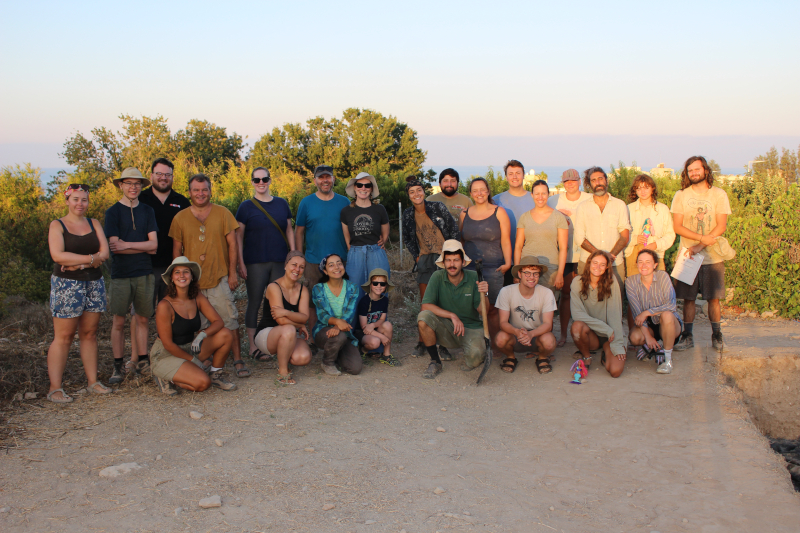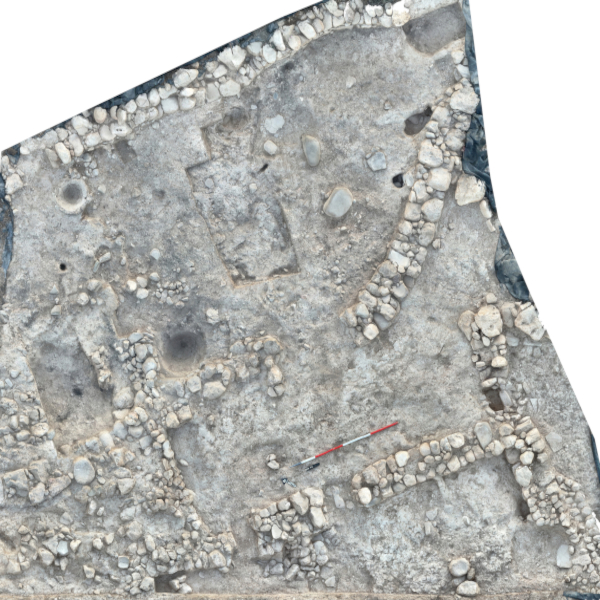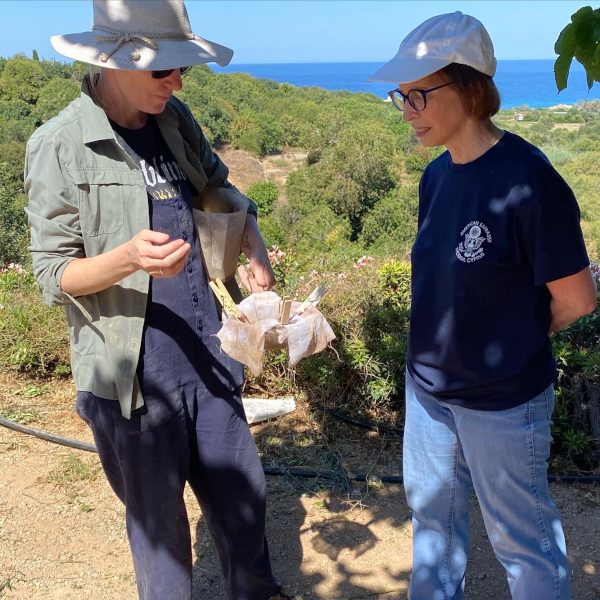
Kissonerga-Skalia: Denise L. Gold Grant Report 2022
2022 marked a return to excavation at Kissonerga-Skalia in western Cyprus after a hiatus of three years due to the pandemic. As you can see in the team photo (figure 1), we were all extremely excited to be back in the field. Many of our student excavators had gone through nearly their entire degrees without having the opportunity to gain practical experience in the field and were keen to learn and take part. We are very grateful to have received a 2022 Denise L. Gold Project Grant to assist with the expenses in the field and to put towards the costs of obtaining radiocarbon dates.
Kissonerga-Skalia is a Bronze Age settlement located near the coast 10km north of Paphos. It lies adjacent to the Neolithic–Chalcolithic settlement of Kissonerga-Mosphilia, excavated and published by Prof. Eddie Peltenburg in the 1980s–1990s. It appears that during a key period of social transformation between the Chalcolithic and Early Cypriot Bronze Age (c. 2500 BC) the people of Kissonerga abandoned their roundhouses and moved 500m down towards the sea, to establish their village in new fields, along with a new style of rectilinear architecture. The settlement prospered for around 800 years until around the end of the Middle Cypriot Bronze Age (c. 1750 BC) when the domestic structures were built over with a large industrial complex that comprises working areas for grinding, processing and heating materials (including the production of beer), along with wide open spaces with trampled mud plaster floors, partially enclosed by a large curvilinear wall. One area of these industrial facilities is shown in Figure 2, where you can see large grinding stones for processing material and circular pits for holding large storage vessels. This final phase was only in use for a short time before the site was completely abandoned, around 1650 BC, at another key period, the transition to the Late Bronze Age. At this time Cyprus saw another islandwide settlement shift connected to the rise of seaborne trade in the Mediterranean, with new sites established that would eventually become the Late Cypriot towns. This abandonment gives us the opportunity to examine the time during which Cypriot settlements begin to diversify and the first ‘monumental’ structures were created.
Cypriot archaeological sites are notoriously poor in archaeobotanical material, leading to the situation where the transition from the Middle–Late Cypriot Bronze Age is still dated only through relative chronologies. Therefore, one of our aims this season was to retrieve short-lived carbonised remains such as nuts and seeds from secure contexts for radiocarbon dating. We were fortunate that our archaeobotanist, Dr Leillani Lucas (shown in Figure 3), was able to retrieve a lentil and a grape seed! Part of the Denise L. Gold grant funds will be used to date these finds, along with samples retrieved in previous seasons, to help us to pin down the timing of this exciting and dynamic period.
-Lindy Crewe, CAARI
Read more about fieldwork at Kissonerga-Skalia and the upcoming 2023 field season here.
Apply for a 2023 ASOR Project Grant, deadline February 28th.
American Society of Overseas Research
The James F. Strange Center
209 Commerce Street
Alexandria, VA 22314
E-mail: info@asor.org
© 2025 ASOR
All rights reserved.
Images licensed under a Creative Commons Attribution-NonCommercial-ShareAlike 4.0 International License


